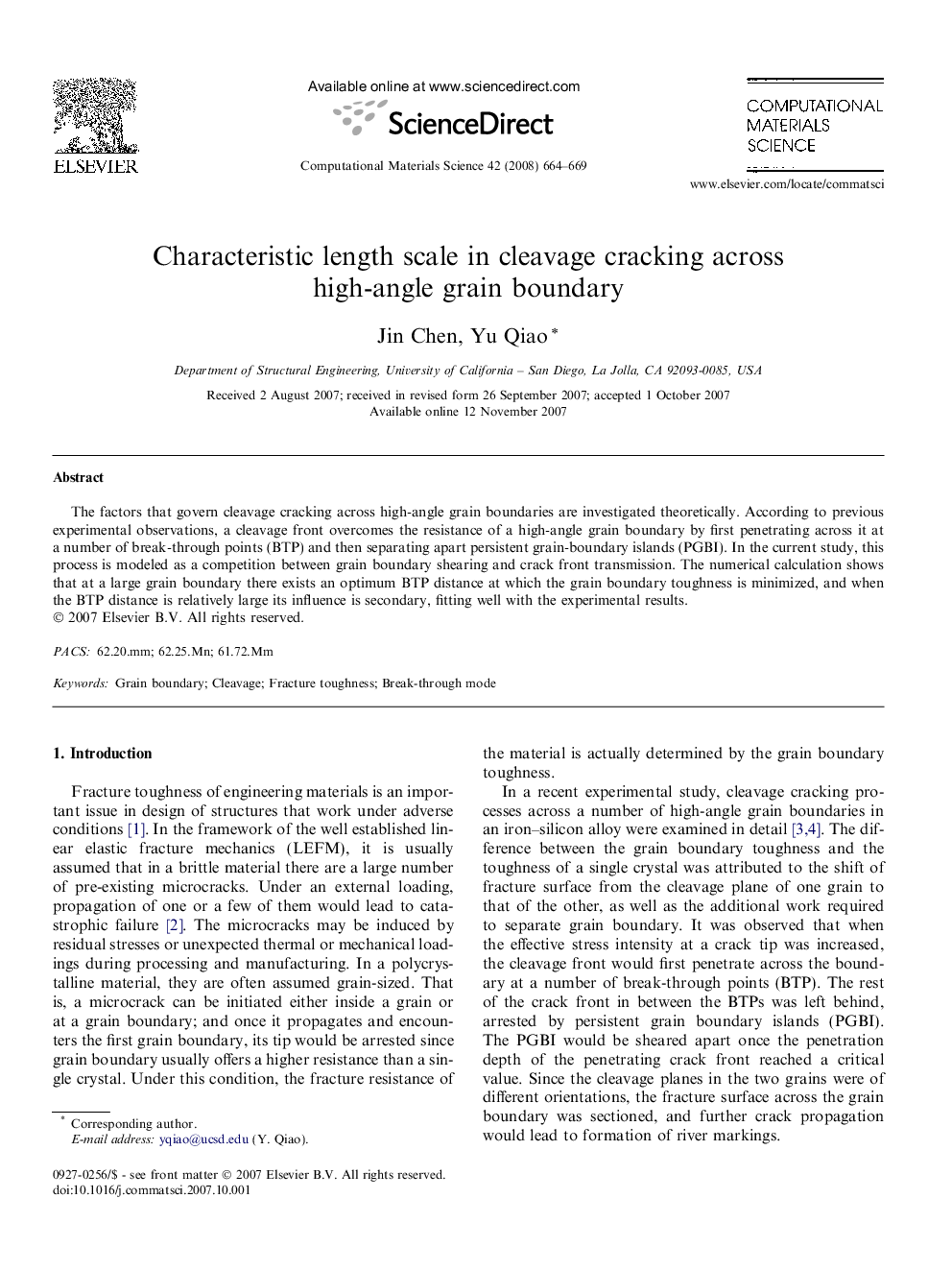| Article ID | Journal | Published Year | Pages | File Type |
|---|---|---|---|---|
| 1563969 | Computational Materials Science | 2008 | 6 Pages |
Abstract
The factors that govern cleavage cracking across high-angle grain boundaries are investigated theoretically. According to previous experimental observations, a cleavage front overcomes the resistance of a high-angle grain boundary by first penetrating across it at a number of break-through points (BTP) and then separating apart persistent grain-boundary islands (PGBI). In the current study, this process is modeled as a competition between grain boundary shearing and crack front transmission. The numerical calculation shows that at a large grain boundary there exists an optimum BTP distance at which the grain boundary toughness is minimized, and when the BTP distance is relatively large its influence is secondary, fitting well with the experimental results.
Related Topics
Physical Sciences and Engineering
Engineering
Computational Mechanics
Authors
Jin Chen, Yu Qiao,
